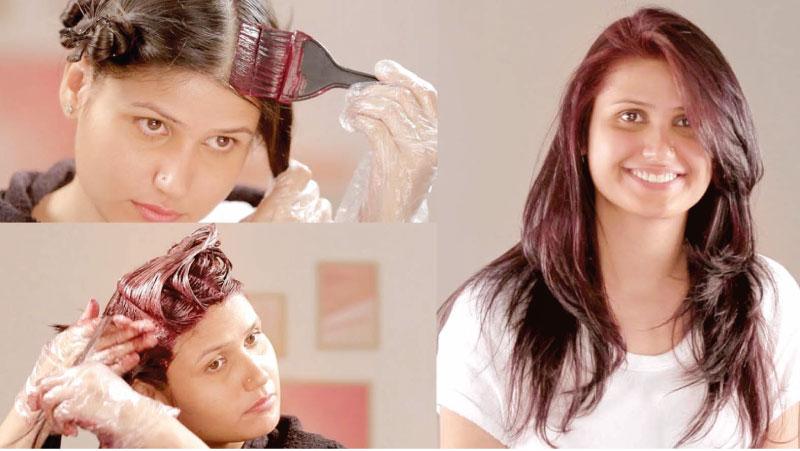
Thinking of taking the plunge for the first time and having your hair coloured? Or perhaps you are looking for a fresh new look? But what should you choose? Ask friends and professionals for advice – consultation in salons are often free even if you go on to do it yourself at home.
Colouring Basics
Before you have your hair coloured, there are several things you should consider.
- Think about your skin tone, if you are after a natural look then you don’t want something that clashes with your skin.
- When choosing a colour, a basic rule is to keep to one or two shades at each side of your original tone.
- Only have a colour change if your hair is in good condition; dry, porous hair absorbs colour too rapidly, leading to a patchy result.

- A few highlights put through your natural colour is a good introduction to colour without heavy commitment.
- Temporary colour is a great way of testing out what you like best.
- Collect pictures of hair colours you like and compare them with the hair tuffs on colourists’ charts in a salon.
Highlights
These terms apply to fine to medium strands of lighter or darker colour woven through the hair. Lighter pieces around the face can really open up your features and accentuate dark eyes. Adding darker pieces around the face will accentuate light eyes.
Natural Dyes
Henna is the most widely used natural dye. Henna enhances natural highlights making colour appear richer. It is available today as a powder, mix it with water (if you wish coffee can be added) to form a paste. The colour fades gradually, frequent applications will give stronger, longer and lasting-effect. On black hair, Henna produces a lovely reddish glow. Please note that, however Henna will not lighten and it is not suitable to use on blonde hair. On hair that is more than 20 percent grey, white, tinted, bleached or highlighted the resultant colour will be orange!
Colouring at home
Many people choose to colour their hair at home because it is cheaper and more convenient. Today, home colourants are much improved but they are still harsher on the hair and give different results from a salon dye. If you are careful, however, an all-over tint can work well at home. In addition to reading the instructions, there are some basic rules that you should follow. Always do a skin test first and wait 24 hours before proceeding if you have an allergic reaction, it can be painful so don’t take risks.
Never mix products from different packs that can cause a bad reaction. Keep to the times given in the instruction to avoid over processing. Use a cream around your hair line to protect your skin from absorbing colour.
White hair/ Grey hair
If you want to cover a few white hairs, use a temporary colour, which lasts 1-5 washes or semi-permanent colours which lasts 6-12 washes. Choose a tone that is similar to your natural colour. If your hair is dark-black you can use dark brown or black. When hair is completely white it can be covered with a permanent tint.
Special Tips
Chlorinated and salt water, perspiration and the weather, all conspire to fade coloured hair, particularly red shades. However, special hair care products are available that will help counteract fading such as those containing ultra-violet filters that protect coloured hair from the effect of the sun. Remember to use a shampoo for cloloured hair and finally, hair conditioner. An intensive conditioning treatment is recommended at least once a month.

